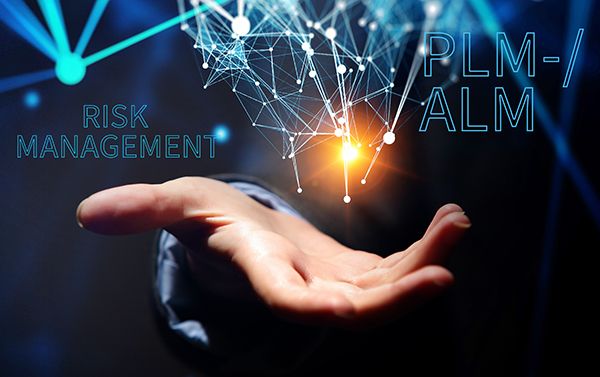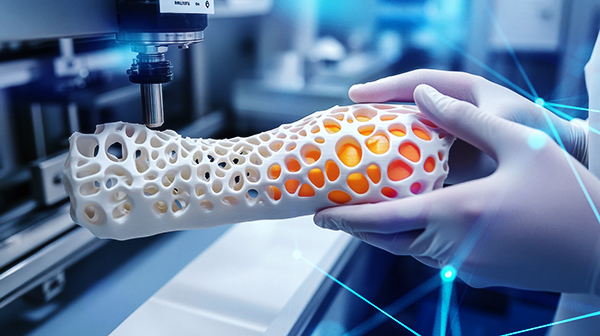
|
Traceability is the driving force behind the digitalization of medical engineeringBy Karsten Theis PROSTEP is recognized as the specialist for end-to-end digitalization and traceability. Companies outside our usual customer base in the automotive and mechanical and plant engineering industries have now also come to realize this. Interesting opportunities are opening up for us, particularly in the field of medical engineering, which has to comply with very strict regulatory requirements when developing their products. Together with our subsidiary BHC, which specializes in mechatronics and software development, we have expanded our know-how in this industry in recent years. This is paying off: We have now been able to acquire a number of interesting customer projects in the field of medical engineering. 
Medical engineering is one of the most important industries in Germany and Europe, after the automotive industry and mechanical and plant engineering. With a market volume of over 160 billion euros in Europe, it not only makes a significant contribution to the health of our economies but also provides almost 900,000 jobs across Europe. There are not only numerous world-class corporations in Europe but also many small and medium-sized companies, which are characterized by their innovative capability and strong growth. They have, however, been a little slow off the mark when it comes to digitalizing their business processes. But that is now changing. Regardless of its economic health, the medical engineering industry is subject to a high level of competitive pressure: rising costs, increasing international competition and ever shorter innovation cycles are forcing companies to examine their development and production processes and make them more efficient. A major factor in increasing efficiency is reducing the enormous amount of manual effort required to ensure compliance and traceability throughout all phases of the product lifecycle. The key to achieving this is the use of powerful PLM/ALM solutions. In addition to risk management, traceability is the most important driver for PLM/ALM projects in the medical engineering industry. This is not least due to the fact that hardly any other industry has to comply with such strict regulatory requirements if they want to be able to launch their products onto the market. The main legal framework for all medical products is the EU Medical Device Regulation (MDR), which specifies the requirements for classifying products according to risk classes. The MDR requires traceability, including unique product identification throughout the entire product lifecycle, and specifies how it is to be documented. It also requires that medical equipment manufacturers monitor the performance and safety of their products even after they have been launched onto the market. 
In addition, manufacturers must give due consideration to specific requirements, such as IEC 62304 or ISO 14971, when developing software for medical devices or software as medical devices. They must meet the requirements of ISO 13485, the standard for quality management in the medical engineering industry, which is a prerequisite for product approval in the EU and many other markets. And, in the case of connected devices, i.e. almost all medical devices today, they must ensure and provide proof of protection against unauthorized access and manipulation. There is almost no other industry that has to meet such comprehensive traceability requirements as the medical engineering industry. This applies not only to horizontal traceability, from requirements to verification and validation, but also to vertical traceability, from market and customer requirements to system requirements, architecture and component specifications through to their implementation in electromechanical and software components. It includes the traceability of materials and components along the supply chain and the exchange of data with partners while maintaining traceability. And it ends with the provision of an individualized digital twin that makes it possible to trace information from the market and from live operations. 
As mentioned earlier, PROSTEP has in recent years become increasingly involved in the medical engineering industry. We have in the meantime won a number of interesting projects, the primary aim of which is to integrate requirements management in PLM/ALM landscapes in a way that ensures traceability across domains and in communication with development partners. We have now come to grips with this industry's high-end requirements and are therefore in a position to offer this know-how to our classic customers. A win-win situation. Medical equipment manufacturers benefit from our time-tested digital thread platform and our many years of migration experience: for example Berlin Heart during the migration of their DOORS environment to the Polarion X cloud. And our customers from other industries benefit from our medical engineering projects as companies in this industry have to meet very high requirements when it comes to risk minimization. These requirements are also becoming relevant for other industries with regard to cyber security. We are able to accurately map these requirements in their IT systems and processes and thus ensure compliance with the regulatory requirements "by design". This plays a key role in minimizing the time and effort involved to ensure traceability, in reducing development time and in speeding up the launch of new products onto the market. Yours Karsten Theis |
|
| © PROSTEP AG | ALL RIGHTS RESERVED | IMPRINT | PRIVACY STATEMENT | YOU CAN UNSUBSCRIBE TO THE NEWSLETTER HERE. |

